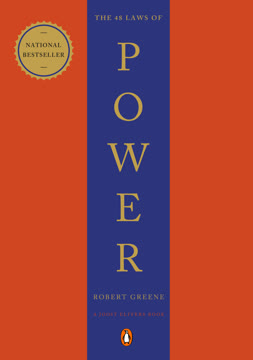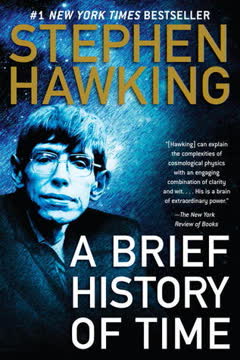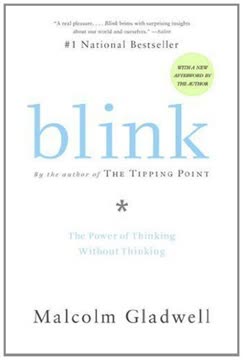Key Takeaways
1. System 1 and System 2: The Two Modes of Thinking
"System 1 operates automatically and quickly, with little or no effort and no sense of voluntary control. System 2 allocates attention to the effortful mental activities that demand it, including complex computations."
Dual-process theory. Our minds operate using two distinct systems: System 1 (fast, intuitive, and emotional) and System 2 (slower, more deliberative, and logical). System 1 continuously generates impressions, feelings, and intuitions without our conscious awareness. It's responsible for skills like driving a car on an empty road or recognizing emotions in facial expressions.
Cognitive load. System 2, on the other hand, is called upon for more complex mental tasks that require focus and effort, such as solving mathematical problems or navigating unfamiliar situations. While System 2 believes itself to be in charge, it often lazily endorses the impressions and intuitions of System 1 without scrutiny.
System 1 characteristics:
- Automatic and effortless
- Always on
- Generates impressions and feelings
- Includes innate skills and learned associations
System 2 characteristics:
- Effortful and deliberate
- Allocates attention
- Makes choices and decisions
- Can override System 1, but requires effort
2. Cognitive Ease and the Illusion of Understanding
"A general 'law of least effort' applies to cognitive as well as physical exertion. The law asserts that if there are several ways of achieving the same goal, people will eventually gravitate to the least demanding course of action."
Cognitive ease. Our brains are wired to prefer information that is easy to process. This preference leads to a state of cognitive ease, where things feel familiar, true, good, and effortless. In contrast, cognitive strain occurs when we encounter information that is difficult to process, leading to increased vigilance and skepticism.
WYSIATI principle. "What You See Is All There Is" (WYSIATI) is a key feature of System 1 thinking. It refers to our tendency to make judgments based solely on the information readily available to us, often ignoring the possibility of missing or unknown information. This principle contributes to:
- Overconfidence in our judgments
- Neglect of ambiguity and suppression of doubt
- Excessive coherence in our explanations of past events (hindsight bias)
The illusion of understanding arises from our mind's ability to construct coherent stories from limited information, often leading to oversimplified explanations of complex phenomena.
3. The Anchoring Effect: How Initial Information Shapes Judgment
"The anchoring effect is not a curious observation about people's responses to rather artificial experiments; it is a ubiquitous feature of human judgment."
Anchoring defined. The anchoring effect is a cognitive bias where an initial piece of information (the "anchor") disproportionately influences subsequent judgments. This effect occurs in various domains, including:
- Numerical estimates
- Price negotiations
- Decision-making in uncertain situations
Mechanisms of anchoring. Two primary mechanisms contribute to the anchoring effect:
- Insufficient adjustment: People start from the anchor and make adjustments, but these adjustments are typically insufficient.
- Priming effect: The anchor activates information compatible with it, influencing the final judgment.
Examples of anchoring in everyday life:
- Retail prices (e.g., "Was $100, Now $70!")
- Salary negotiations
- Real estate valuations
- Judicial sentencing decisions
To mitigate the anchoring effect, it's crucial to actively seek out alternative information and perspectives, and to be aware of potential anchors in decision-making processes.
4. Availability Heuristic: Judging Frequency by Ease of Recall
"The availability heuristic, like other heuristics of judgment, substitutes one question for another: you wish to estimate the size of a category or the frequency of an event, but you report an impression of the ease with which instances come to mind."
Availability explained. The availability heuristic is a mental shortcut that relies on immediate examples that come to mind when evaluating a specific topic, concept, method, or decision. We tend to overestimate the likelihood of events that are easily recalled, often due to their vividness or recency.
Biases from availability. This heuristic can lead to several biases in judgment:
- Overestimation of unlikely events that are easily imagined or recently experienced
- Underestimation of common but less memorable events
- Skewed risk perception based on media coverage or personal experiences
Factors influencing availability:
- Recency of events
- Emotional impact
- Personal relevance
- Media coverage
To counteract the availability heuristic, it's important to seek out objective data and statistics, rather than relying solely on easily recalled examples or personal experiences.
5. Overconfidence and the Illusion of Validity
"The confidence that individuals have in their beliefs depends mostly on the quality of the story they can tell about what they see, even if they see little."
Overconfidence bias. People tend to overestimate their own abilities, knowledge, and the accuracy of their predictions. This overconfidence stems from:
- The illusion of validity: Our tendency to believe that our judgments are accurate, even when evidence suggests otherwise
- Hindsight bias: The tendency to view past events as more predictable than they actually were
Consequences of overconfidence. This bias can lead to:
- Poor decision-making in various domains (e.g., investments, business strategies)
- Underestimation of risks
- Failure to adequately prepare for potential negative outcomes
Strategies to mitigate overconfidence:
- Seek out disconfirming evidence
- Consider alternative explanations
- Use statistical thinking and base rates
- Encourage diverse perspectives in decision-making processes
Recognizing the limits of our knowledge and the uncertainty inherent in many situations can lead to more realistic assessments and better decision-making.
6. Intuition vs. Formulas: When to Trust Expert Judgment
"The research suggests a surprising conclusion: to maximize predictive accuracy, final decisions should be left to formulas, especially in low-validity environments."
Limitations of intuition. While expert intuition can be valuable in certain contexts, research shows that simple statistical formulas often outperform expert judgment, especially in:
- Complex or uncertain environments
- Situations with multiple variables to consider
- Predictions of future outcomes
Conditions for valid intuitions. Expert intuition is most likely to be reliable when:
- The environment is sufficiently regular to be predictable
- There is opportunity for prolonged practice and feedback
Examples where formulas outperform intuition:
- Medical diagnoses
- Employee performance prediction
- Financial forecasting
- College admissions decisions
To improve decision-making, organizations should consider using statistical models and algorithms when possible, while leveraging human expertise for tasks that require contextual understanding, creativity, or ethical considerations.
7. Loss Aversion and the Endowment Effect
"The 'loss aversion ratio' has been estimated in several experiments and is usually in the range of 1.5 to 2.5."
Loss aversion defined. Loss aversion is the tendency for people to feel the pain of losing something more intensely than the pleasure of gaining something of equal value. This psychological principle has far-reaching implications in various domains:
- Economics and finance
- Marketing and consumer behavior
- Decision-making under uncertainty
The endowment effect. Closely related to loss aversion, the endowment effect is our tendency to overvalue things simply because we own them. This leads to:
- Reluctance to trade or sell owned items
- Higher asking prices for sellers compared to buyers' willingness to pay
Factors influencing loss aversion and the endowment effect:
- Emotional attachment
- Sense of ownership
- Reference points and expectations
Understanding these biases can help individuals and organizations make more rational decisions, especially in negotiations, investments, and product pricing strategies.
8. Framing: How Presentation Affects Decision-Making
"The statement of a problem guides the selection of the relevant precedent, and the precedent in turn frames the problem and thereby biases the solution."
Framing effects. The way information is presented (framed) can significantly influence decision-making, even when the underlying facts remain the same. This effect demonstrates that our preferences are not as stable as we might think and are often constructed in the moment based on context.
Types of framing. Common framing effects include:
- Gain vs. loss framing (e.g., "90% survival rate" vs. "10% mortality rate")
- Positive vs. negative framing (e.g., "95% fat-free" vs. "5% fat")
- Temporal framing (e.g., short-term vs. long-term consequences)
Implications of framing:
- Marketing and advertising strategies
- Public policy communication
- Medical decision-making
- Financial choices
To make more rational decisions, it's important to reframe problems in multiple ways, consider alternative perspectives, and focus on the underlying facts rather than the presentation.
9. The Fourfold Pattern of Risk Attitudes
"The fourfold pattern of preferences is considered one of the core achievements of prospect theory."
Prospect theory. This theory, developed by Kahneman and Tversky, describes how people make decisions under risk and uncertainty. It challenges the traditional economic model of rational decision-making by incorporating psychological factors.
The fourfold pattern. This pattern describes four distinct risk attitudes based on the probability of outcomes and whether they involve gains or losses:
- High probability gains: Risk aversion (e.g., preferring a sure $900 over a 90% chance of $1000)
- Low probability gains: Risk seeking (e.g., buying lottery tickets)
- High probability losses: Risk seeking (e.g., gambling to avoid a sure loss)
- Low probability losses: Risk aversion (e.g., buying insurance)
Factors influencing risk attitudes:
- Probability weighting (overweighting small probabilities)
- Loss aversion
- Diminishing sensitivity to gains and losses
Understanding this pattern can help predict and explain seemingly irrational behavior in various contexts, from financial decision-making to public policy.
10. Mental Accounting and Emotional Decision-Making
"Mental accounts are a form of narrow framing; they keep things under control and manageable by a finite mind."
Mental accounting. This cognitive phenomenon describes how individuals and households implicitly use mental accounting systems to organize, evaluate, and keep track of financial activities. Key aspects include:
- Categorization of expenses and income
- Different treatment of money based on its source or intended use
- Tendency to ignore opportunity costs
Emotional factors. Mental accounting is heavily influenced by emotions and can lead to seemingly irrational behavior:
- Reluctance to sell investments at a loss (disposition effect)
- Overspending on credit cards while maintaining savings accounts
- Treating "found money" differently from earned income
Implications of mental accounting:
- Personal finance decisions
- Consumer behavior
- Investment strategies
- Marketing and pricing tactics
By recognizing the influence of mental accounting and emotional factors in decision-making, individuals can strive for more rational and holistic financial management, considering the fungibility of money and focusing on overall wealth rather than arbitrary mental categories.
Last updated:
FAQ
What's "Thinking, Fast and Slow" about?
- Dual systems of thinking: The book explores two systems of thought: System 1, which is fast, intuitive, and emotional, and System 2, which is slower, more deliberative, and logical.
- Cognitive biases and heuristics: It examines how these systems lead to cognitive biases and heuristics, affecting our judgments and decisions.
- Behavioral economics: The book challenges traditional economic theories by introducing psychological insights into decision-making processes.
Why should I read "Thinking, Fast and Slow" by Daniel Kahneman?
- Insight into human behavior: It provides a comprehensive understanding of how we think and make decisions, offering insights into human behavior and psychology.
- Practical applications: The book offers advice on recognizing and mitigating cognitive biases in personal and professional life.
- Influence on various fields: Written by Nobel laureate Daniel Kahneman, it has reshaped fields like economics, psychology, and business.
What are the key takeaways of "Thinking, Fast and Slow"?
- System 1 and System 2: Understanding the characteristics and roles of these systems is crucial for recognizing how we process information.
- Cognitive biases: The book identifies biases such as anchoring, availability, and representativeness that affect our judgments.
- Prospect theory: Kahneman introduces prospect theory, explaining how people evaluate potential losses and gains, highlighting loss aversion.
How does "Thinking, Fast and Slow" explain cognitive biases?
- Definition of biases: Cognitive biases are systematic patterns of deviation from norm or rationality in judgment, often resulting from the interplay of System 1 and System 2.
- Examples of biases: The book discusses biases like the anchoring effect, availability heuristic, and loss aversion, showing their influence on decisions.
- Impact on decision-making: Understanding these biases helps readers recognize and mitigate their effects, leading to more rational decisions.
What is the significance of System 1 and System 2 in decision-making?
- System 1's role: It operates automatically and quickly, handling routine tasks and quick judgments with little effort.
- System 2's role: It allocates attention to effortful mental activities, including complex computations and conscious decision-making.
- Interplay and conflict: The book illustrates how these systems interact, often leading to cognitive biases when System 1's quick judgments override System 2's analytical thinking.
What is the "halo effect" as described in "Thinking, Fast and Slow"?
- Definition: The halo effect is a cognitive bias where our overall impression of a person influences how we feel and think about their character.
- Example: If you like a person's voice, you might also assume they have other positive traits, even without evidence.
- Impact: This bias can lead to overconfidence in our judgments about people and situations.
How does the "availability heuristic" work according to Kahneman?
- Ease of recall: It involves judging the frequency or likelihood of an event based on how easily examples come to mind.
- Biases: This can lead to biases, as dramatic or recent events are more easily recalled, skewing our perception of their frequency.
- Implications: Understanding this heuristic can help us recognize when our judgments are influenced by memorable but not necessarily representative events.
What is "anchoring" and how does it affect decision-making?
- Initial reference point: Anchoring is the tendency to rely heavily on the first piece of information encountered (the "anchor") when making decisions.
- Influence: Even irrelevant anchors can significantly affect estimates and decisions, as seen in experiments with random numbers.
- Mitigation: Being aware of anchoring can help individuals adjust their judgments more accurately by considering a wider range of information.
What is loss aversion, and why is it important in "Thinking, Fast and Slow"?
- Definition of loss aversion: It is the tendency to prefer avoiding losses over acquiring equivalent gains, a concept central to Kahneman's prospect theory.
- Psychological impact: Losses loom larger than gains, influencing decisions in areas like investing, negotiation, and consumer behavior.
- Practical implications: Recognizing loss aversion can help individuals and organizations make more balanced decisions by understanding the emotional weight of potential losses.
How does "Thinking, Fast and Slow" challenge traditional economic theories?
- Critique of rationality: The book argues that traditional economic models, which assume rational decision-making, fail to account for cognitive biases and irrational behaviors.
- Introduction of behavioral economics: Kahneman's work integrates psychological insights into economic theory, highlighting the role of human psychology in economic decisions.
- Influence on policy and practice: These insights have led to changes in how policies are designed and how businesses approach consumer behavior.
What is the endowment effect, and how is it explained in "Thinking, Fast and Slow"?
- Definition of the endowment effect: It is the phenomenon where people ascribe more value to things merely because they own them.
- Role of loss aversion: The book explains that the endowment effect is driven by loss aversion, as people perceive the loss of an owned item as more significant than the gain of acquiring it.
- Implications for behavior: Understanding the endowment effect can help explain consumer behavior, negotiation tactics, and market dynamics.
What are some of the best quotes from "Thinking, Fast and Slow" and what do they mean?
- "Losses loom larger than gains." This encapsulates loss aversion, highlighting how the fear of loss often outweighs the potential for gain.
- "Nothing in life is as important as you think it is, while you are thinking about it." This reflects the focusing illusion, where our focus distorts our perception of importance.
- "We can be blind to the obvious, and we are also blind to our blindness." It underscores the exploration of cognitive biases and our lack of awareness of our own thought processes.
Review Summary
Readers praise "Thinking, Fast and Slow" for its insightful analysis of human decision-making processes. Many find it eye-opening and transformative, offering practical applications to everyday life. However, some criticize its length and technical density, suggesting it can be challenging for casual readers. Despite this, it's frequently recommended for those interested in psychology, economics, or improving their decision-making skills. The book's scientific approach and real-world examples are particularly appreciated, though some readers find certain sections repetitive or overly academic.
Similar Books
Download PDF
Download EPUB
.epub digital book format is ideal for reading ebooks on phones, tablets, and e-readers.

















